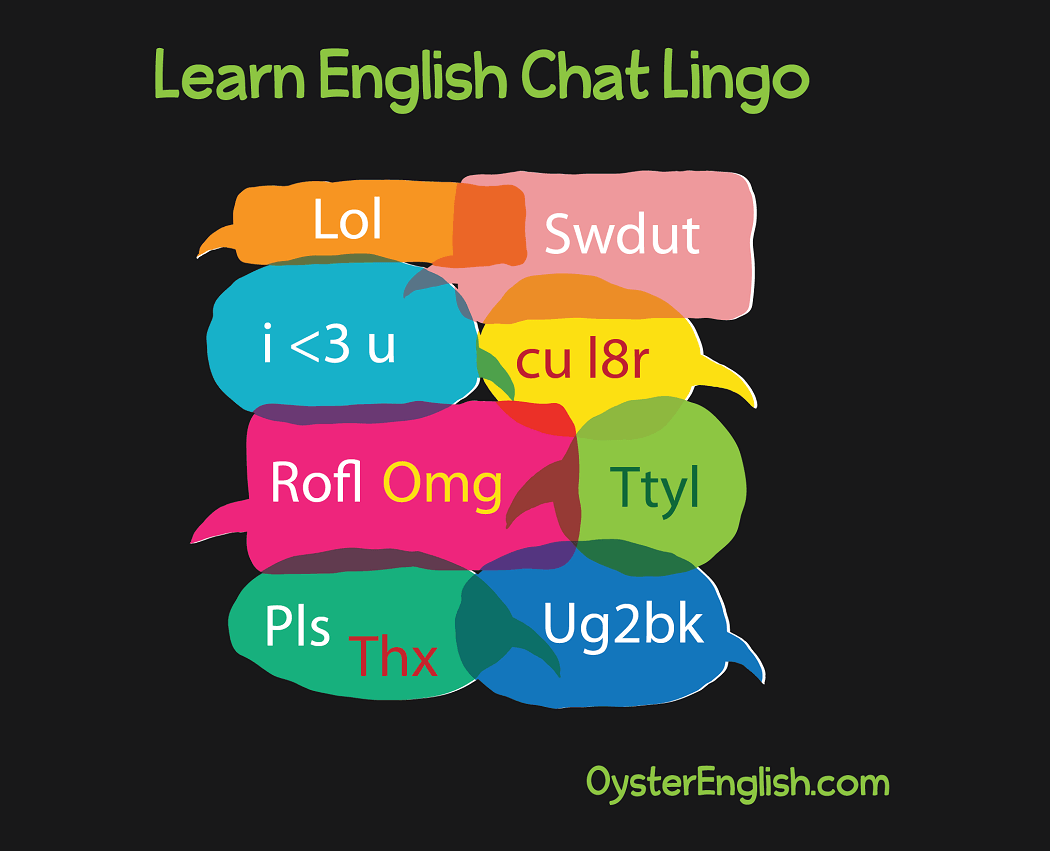Understanding Chat & Text Lingo
Chat & Text lingo: Help for ESL learners
Chat or text lingo can be really hard for mother tongue English speakers so it's especially difficult for those learning English as a Second Language (ESL).
For many of my students English texting (or net lingo) is like learning another English language. It can be very frustrating for them.
One reason it’s hard is that words are abbreviated and shortened. Another is that there are a lot of slang and idioms in text lingo.
But text lingo is everywhere, especially because of mobile phone messaging, internet commenting, chatting and Twitter. I bet you even use text lingo in your own language!
No matter what you call it, it’s in emails, text messages, tweets, online chatting… everywhere. The there are two main ways people write in text speak:
- Using Abbreviations: acronyms and initialisms
- Typing in shorthand: Condensing words & using numbers
Let's explore these two ways of writing below.
Chat & Text lingo: Using Abbreviations
You can abbreviate phrases and expressions by using the first letter of each word. These are often written in CAPITAL letters. So, to abbreviate a phrase or group of words is to shorten the phrase by using a letter for each word.
- Some abbreviations are acronyms (you pronounce the abbreviation like a word) like YOLO (sounds like “yo-low”).
- Other abbreviations are initialisms (you say the letters when you speak the word) like BFF (be eff eff) or TGIF (tee gee eye eff) .
Note: Often you never speak these abbreviations at all and only use them in writing. For example, I don't think I've ever heard someone actually say TTLY, ROFL, LMAO, PLS, THX or IMHO. I just see these expressions in writing.
Let's look at some examples. How many of these do you already know?
- TGIF = thank God it’s Friday
- BFF = best friend forever
- FYI = for your information
- OMG = oh my God
- YOLO = you only live once
- LOL = laughing out loud
- ROFL = rolling on the floor laughing
- LMAO = laughing my a** (arse) off
- PLS = please
- ThX = thanks
- SMH = shaking my head (this means you are shaking your head from side to side left and right, not up and down). It’s a way to be sarcastic or express your disbelief that someone is acting a certain way)
- IDK = I don’t know
- IMHO = In my humble opinion / in my honest opinion
- TTYL = talk to you later
- WRUD = What are you doing?
- HAND = have a nice day
- SWDUT = So what do you think?
- WDUM = What do you mean?
- NSFW = not safe for work (this message is usually written by someone who is sending something that has a video or photo that is not appropriate for opening at work)
Chat & Text Lingo: Using Shorthand
To type in short hand, drop the vowels in words (a, e, i, o, u), replace words with numbers and individual letters of the alphabet that make the same sound.
- text message = txt msg
- b = be
- c = see
- r = are
- u = you
- ur = your, you’re
- 1 = one
- 2 = to / too (and of course two)
- 4 = for
- I luv u = I love you
- I luv u 2 = I love you too
- CU l8tr = see you later
- ‘cuz = because
- b/c = because
- B4 = before
- thx = thanks
- gr8 = great
- w8 = wait
- I <3 u = I love you (the <3 represents a heart)
- I h8 u = I hate you
- ne1 = anyone
- c@ = cat
- Ug2bk = you’ve got to be kidding
- ^5 = high five (A gesture that is used to celebrate, where two people slap each other’s open palm with their arms raised. “high because the hand is raised high in the air, and “five’ for the 5 fingers on the hand.)
If you're confused about text lingo that you see, please check out this online dictionaries that can help:
Chat & Text Lingo: Slang
Sometimes text speak is not just short hand or abbreviating phrases. Often people are actually using slang, which makes it even harder for those learning English as a Second language. Click here to learn more about slang and text lingo.
- Home Page ›
- Main Vocabulary List ›
- Text Lingo

